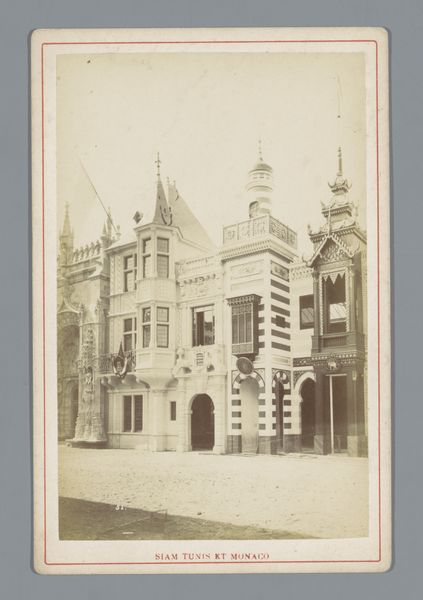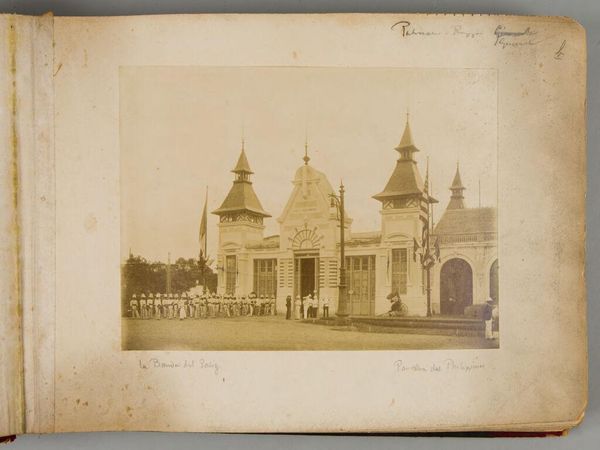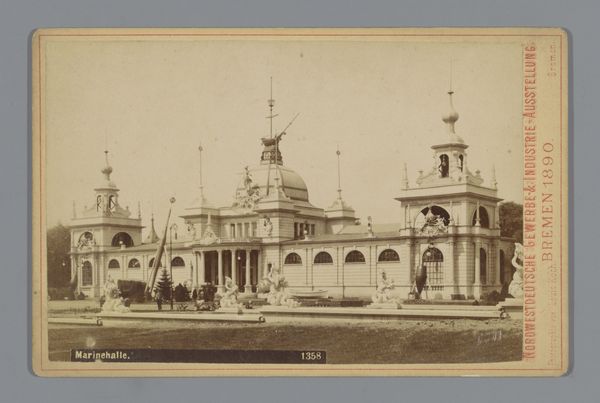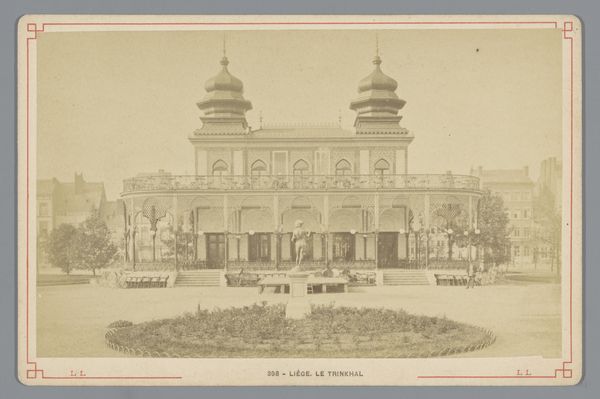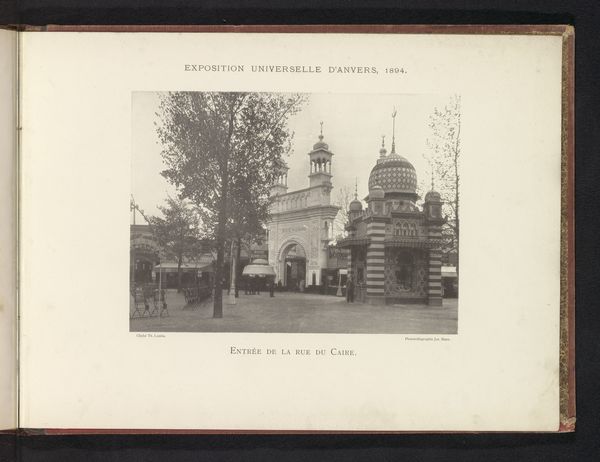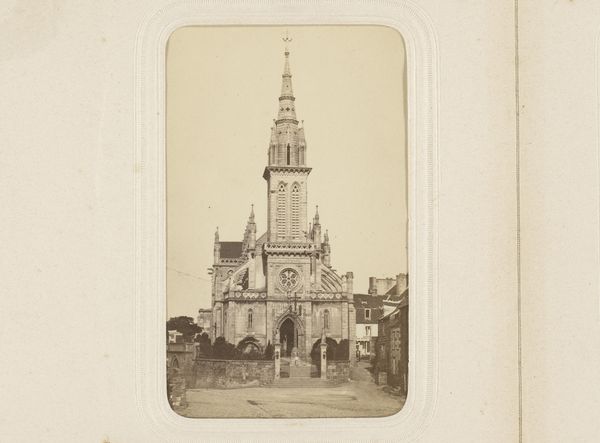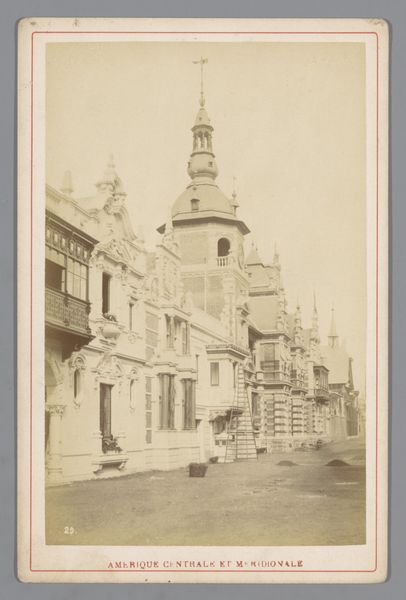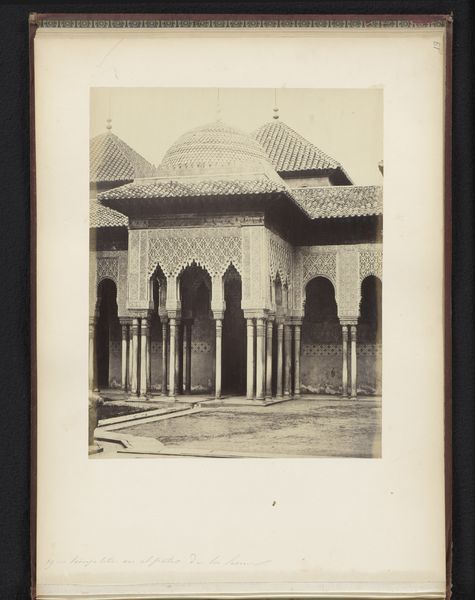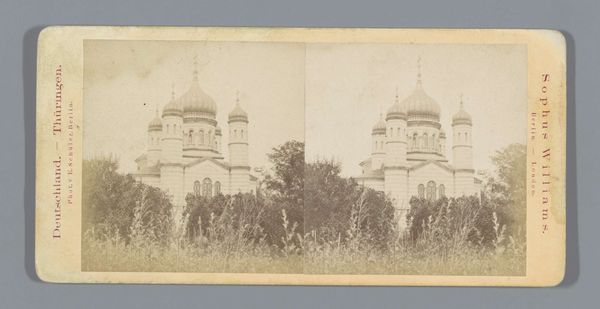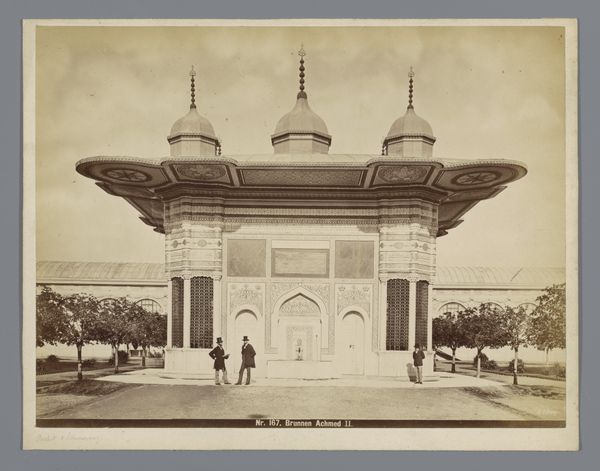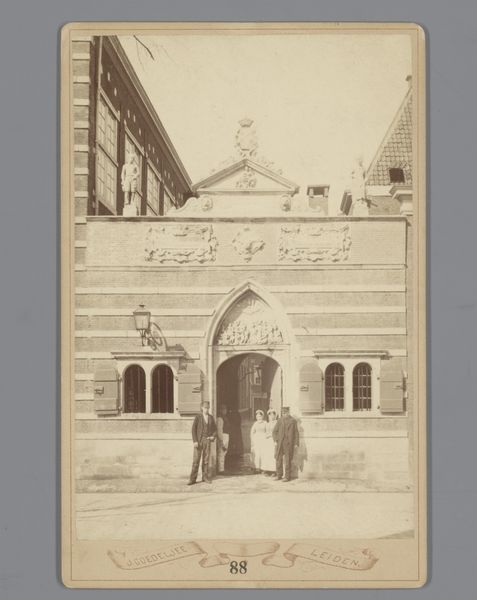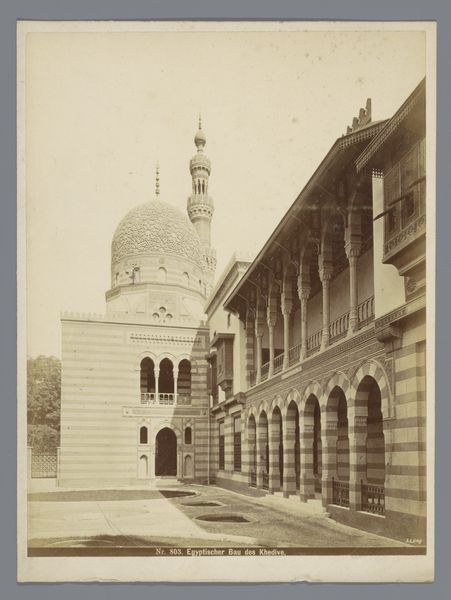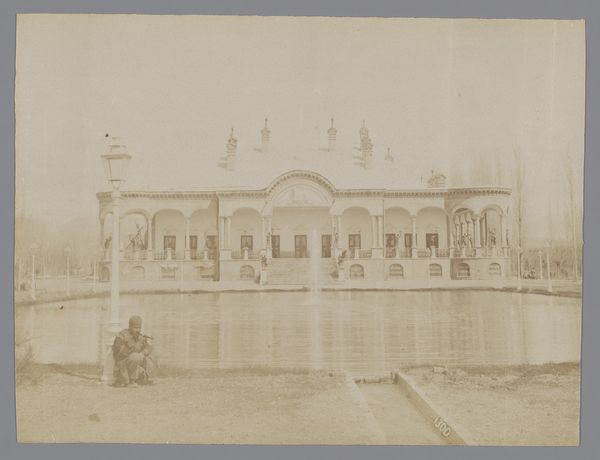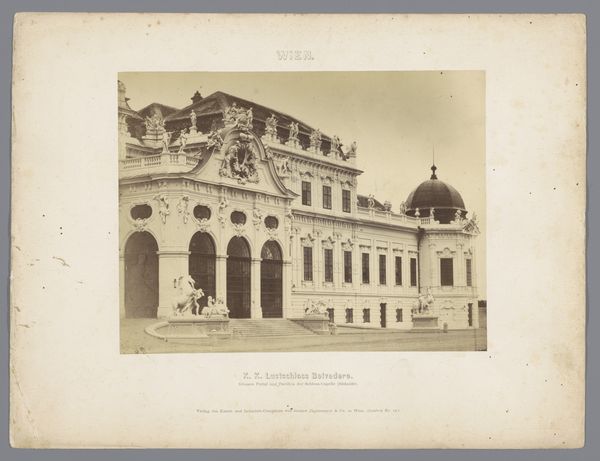
print, photography, gelatin-silver-print
#
byzantine-art
# print
#
photography
#
gelatin-silver-print
#
cityscape
Dimensions: height 142 mm, width 102 mm
Copyright: Rijks Museum: Open Domain
Editor: Here we have a gelatin-silver print titled "Gezicht op de Russisch-orthodoxe kerk Gen\u00e8ve," dating from around 1880 to 1920, created by A & P. Noblet. It has a sepia tone and showcases the architecture of the Russian Orthodox Church. What strikes me is the seemingly intentional placement of what appear to be guards in front of the building. What does this image evoke in you? Curator: That’s a great observation. The inclusion of those figures highlights a key tension. In late 19th-century Europe, religious architecture, especially when distinct, like this Byzantine-style church in Geneva, often served as a visual symbol of cultural and political power. Consider that this photograph circulated as a print. What public function did this photograph serve at the time? Editor: Perhaps to showcase Geneva's openness to different cultures or, conversely, to subtly highlight the 'foreignness' of this architectural style? Curator: Precisely. The camera doesn't lie, as they say, and its image becomes part of public record, influencing opinions about the church itself and potentially about Russian influence in Europe. Also, photography, as a relatively new medium at the time, lent a sense of ‘authenticity’ and objectivity, further shaping public perception. Is the Russian Church represented as integrated into its Genevan context or set apart and othered? Editor: I see what you mean. The clean, sharp lines of the church do contrast a bit with what little we see of the rest of the landscape, possibly hinting at the Church being distinctly Russian and separate from its surroundings. Curator: Indeed. The photograph captures not just a building, but a complex moment in European history, where religious and national identities were constantly being negotiated and visually represented. Editor: That makes me consider how different audiences, then and now, might interpret the same image with differing perspectives and assumptions. Curator: Exactly. And that ongoing dialogue and reassessment are essential to the enduring power and importance of images like this.
Comments
No comments
Be the first to comment and join the conversation on the ultimate creative platform.
